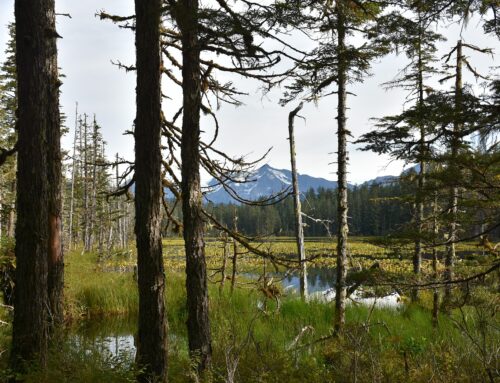In May, the U.S. Government Accountability Office (GAO) released a new report about methane emissions from oil and gas development on federal lands. GAO produced the report, titled “Federal Actions Needed to Address Methane Emissions from Oil and Gas Development,” at the request of Senate Energy and Natural Resources Chair Joe Manchin (D-WV), and Sens. Thomas Carper (D-DE), Maria Cantwell (D-WA), and Angus King (I-ME).
Methane emissions have a significant effect on the climate. As a greenhouse gas, methane has a global warming potential 28 to 34 times higher than carbon dioxide over a 100- year period. According to the GAO report, “about 60 percent of total global methane emissions come from human activities, of which fossil fuel production, including natural gas, accounts for about 34 percent.” Methane is regularly emitted throughout the oil and gas development process, when operators vent (when natural gas is released directly into the atmosphere) and flare (when natural gas is burned) during extraction, or when it is leaked during transportation and storage. The report discusses the efforts of federal agencies, industry, and states to reduce methane emissions during oil and gas development.
Federal Agency Action: The report details how both the Environmental Protection Agency (EPA) and the Bureau of Land Management (BLM) have encountered administrative and legal challenges to new methane regulations for oil and gas development. In 2016, the EPA established national standards to reduce methane emissions for various segments of the oil and natural gas industry, including extraction, processing, transportation, and storage. This rule was temporarily revoked in September 2020 until Congress passed and the President signed a measure in July 2021 reinstating the 2016 methane standards. Under those EPA standards, operators must perform semiannual monitoring at well sites to detect methane emissions.
In 2016, the BLM also issued a rule, referred to as the 2016 Waste Prevention Rule, to reduce methane emissions from oil and gas production on federal onshore oil and gas leases. But, due to a series of administrative actions and legal challenges, the BLM did not fully implement this rule. In September 2018, the BLM publish another rule, referred to as the 2018 Replacement Rule, which rescinded many of the 2016 Rule’s requirements. In 2020, the 2016 Rule was struck down by the U.S. District Court for the District of Wyoming. Current regulations for BLM-managed leases do not specifically mention methane and include numerous exemptions that allow for the venting and flaring of natural gas.
Industry Action: The report also discusses the voluntary actions taken by the oil and gas industry to reduce methane emissions, including replacing leaky equipment, participating in methane reduction initiatives, and using alternative technologies to detect methane emissions in addition to those required by the EPA. The GAO concluded that the EPA’s current process for approving alternative emission reduction technologies impedes operators’ adoption of other effective approaches.
State Action: The GAO report highlights seven states—California, Colorado, New Mexico, North Dakota, Pennsylvania, Texas, and Wyoming— that have enacted additional regulations to limit methane emissions from oil and gas development. Notably, three states— Colorado, New Mexico, and North Dakota—require operators to capture methane emissions. Unlike BLM regulations, these states either prohibit venting or flaring natural gas, enforce gas capture targets, or require operators to submit plans to capture gas when applying for a new drilling permit.
The report concludes with strong criticism of current BLM regulations for oil and gas operators on federal land:
“Methane is a substantial contributor to global greenhouse gas emissions, results in air pollution, and constitutes a lost source of revenue for the federal government when emitted from sources on federal lands… Large oil- and gas-producing states are taking steps to regulate methane that go beyond what BLM demands, such as requiring operators to submit gas capture plans prior to drilling and to establish and meet goals for gas capture. Without BLM taking steps to institute similar requirements for operators on federal lands, operators will continue to vent or flare methane that contributes to pollution and greenhouse gas emissions, and the federal government will continue to lose revenues from the production of oil and gas.”
Taxpayers for Common Sense has been a longtime advocate of reducing methane emissions during oil and gas development. Existing federal oil and gas management practices allow producers to use, leak, flare, and vent natural gas at an alarming rate. Much of this gas is lost without paying royalties, meaning millions in lost revenue for taxpayers each year. Between 2007 to 2016, oil and gas companies reported losing 209.7 billion cubic feet (bcf) of natural gas, worth an estimated $1.07 billion. If the standard onshore royalty rate of 12.5 percent had been applied, taxpayers could have received potential revenue of $134 million.
Requiring federal methane capture through a prohibition of routine venting and flaring would be a positive step towards cutting back on waste. Mitigating the loss of gas is feasible and cost effective with modern technologies. In a 2011 report, the GAO found that “… about 40 percent of natural gas estimated to be vented and flared on federal onshore leases could be economically captured with currently available control technologies.” It is imperative the federal government take all steps to limit the amount of harmful methane released into the atmosphere and ensure taxpayers are compensated for the oil and gas we collectively own.










